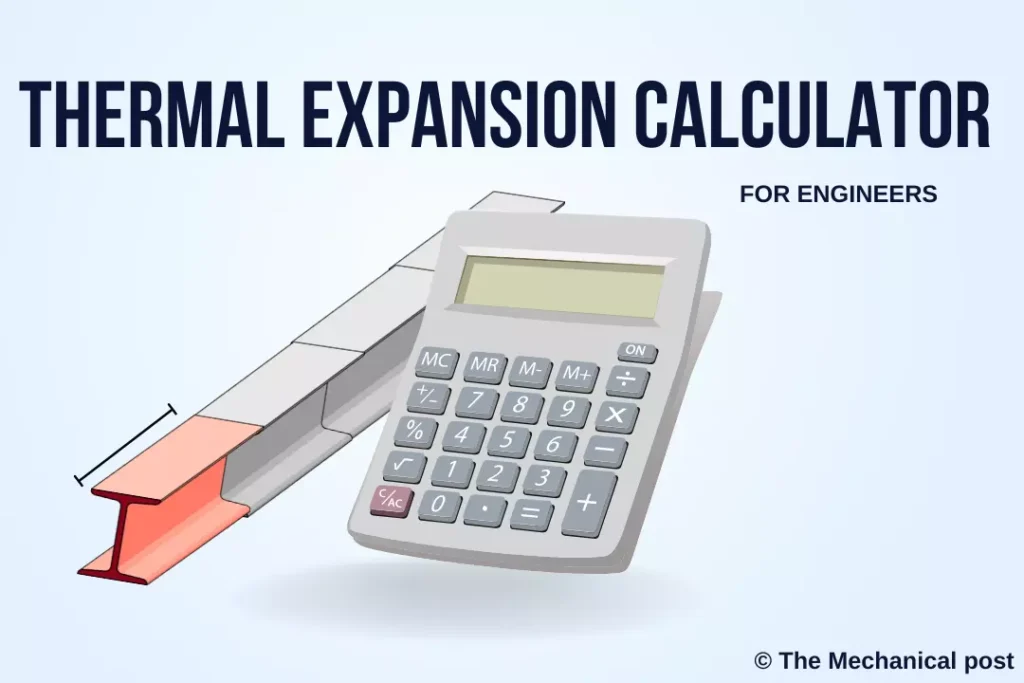Engineers, designers, and researchers often need to calculate how much various materials will expand when heated. To make these thermal expansion calculations easy, I created an online Thermal Expansion Calculator.
Thermal Expansion Calculator
Results
Change in Length:
Final Length:
Thermal Expansion Calculator overview:
This thermal expansion calculator allows you to quickly estimate the growth in length, volume, or area for a material given the temperature change. It can be useful for materials selection, designing parts and assemblies, and accounting for thermal growth.

How to use the Thermal Expansion Calculator
To use the thermal expansion calculator, simply input:
- Select Units: Choose either Metric (meters, °C) or Imperial (inches) units.
- Material/Coefficient: Pick the material according to your choice from 15+ materials
- Initial Length: Enter the original length of the material.
- Temperature Change: Input the temperature change (final temperature – initial temperature).
- Click on “Calculate”
It will then output the estimated expanded size.
The thermal expansion calculator works for common engineering materials like metals, plastics, ceramics, and more. Just lookup the CTE value and input it.
Linear Thermal Expansion Formula:
Linear thermal expansion occurs in one dimension, typically length. The linear expansion ΔL of an object due to a change in temperature ΔT can be calculated using the formula:
ΔL = α * L * ΔT
Where:
ΔL = Change in length
α = Linear expansion coefficient of the material (measured in 1/°C)
L = Initial length of the material
ΔT = Change in temperature (final temperature – initial temperature)
Thermal expansion becomes very significant over large temperature swings and bigger parts. This calculator makes it easy to account for thermal growth at the design stage.
For example, you can estimate how much a steel I-beam might grow on a hot summer day based on the expected temperature increase.
Coefficient of Linear Expansion:
Each material has a unique linear expansion coefficient, denoted by α. It represents the fractional change in length per degree Celsius (°C) temperature change.
The higher the coefficient, the more a material expands with temperature variation. For isotropic materials (uniform expansion in all directions), the coefficient of linear expansion (α) and the coefficient of volumetric expansion (β) are related as β = 3α.
Applications of the Thermal Expansion Calculator
Some example uses for this thermal expansion calculator include:
- Estimating growth of motor components from idle to operating temps
- Determining gaps needed in assemblies and mechanisms
- Joints like knuckle joint and cotter joints.
- Predicting expansion of pipes, tubes, and supply lines
- Modeling growth of structural beams and bridges
The calculator is free to use and works on all web browsers. I hope this tool provides helpful estimates for your thermal expansion needs! Share it with your fellow Engineers!!

